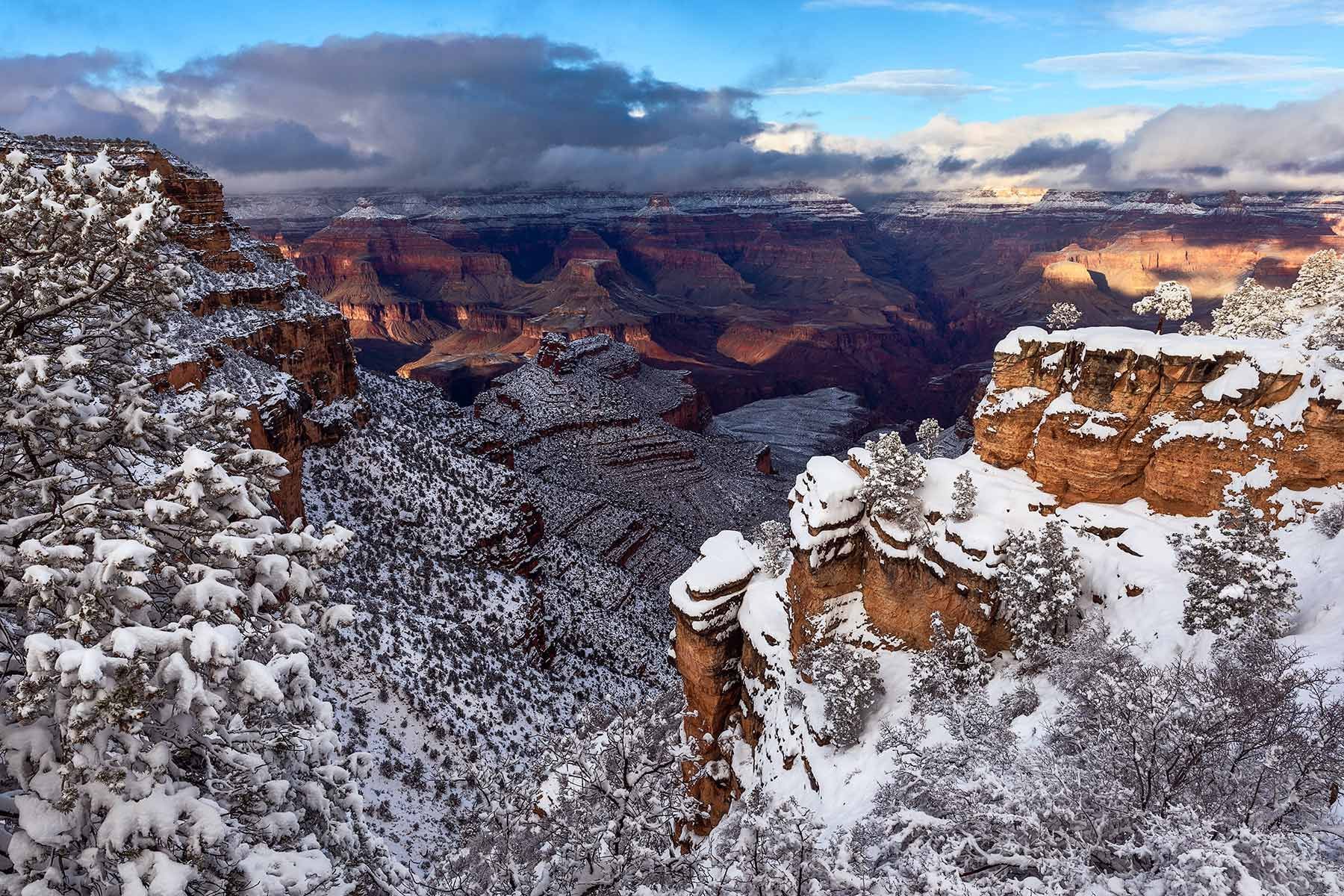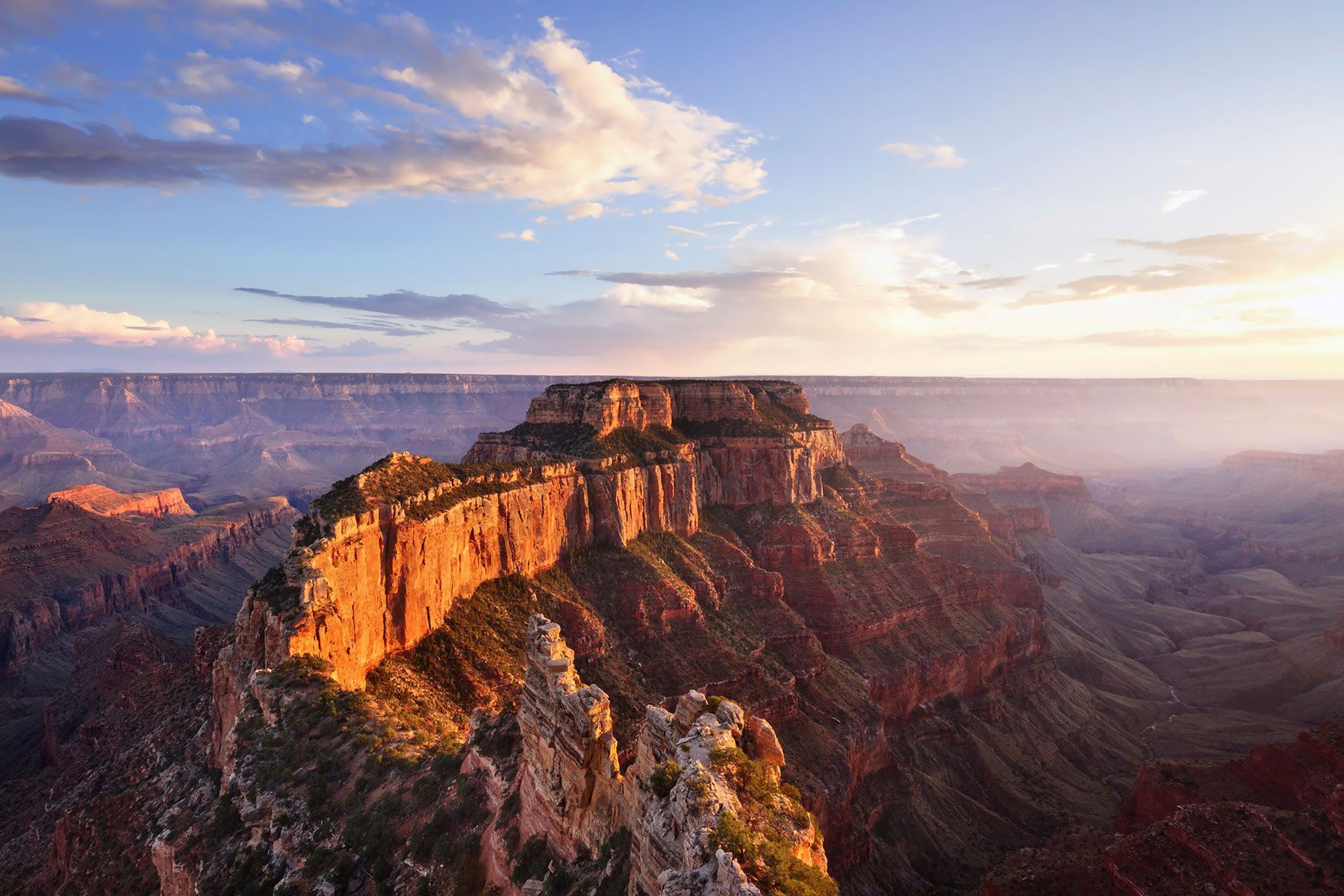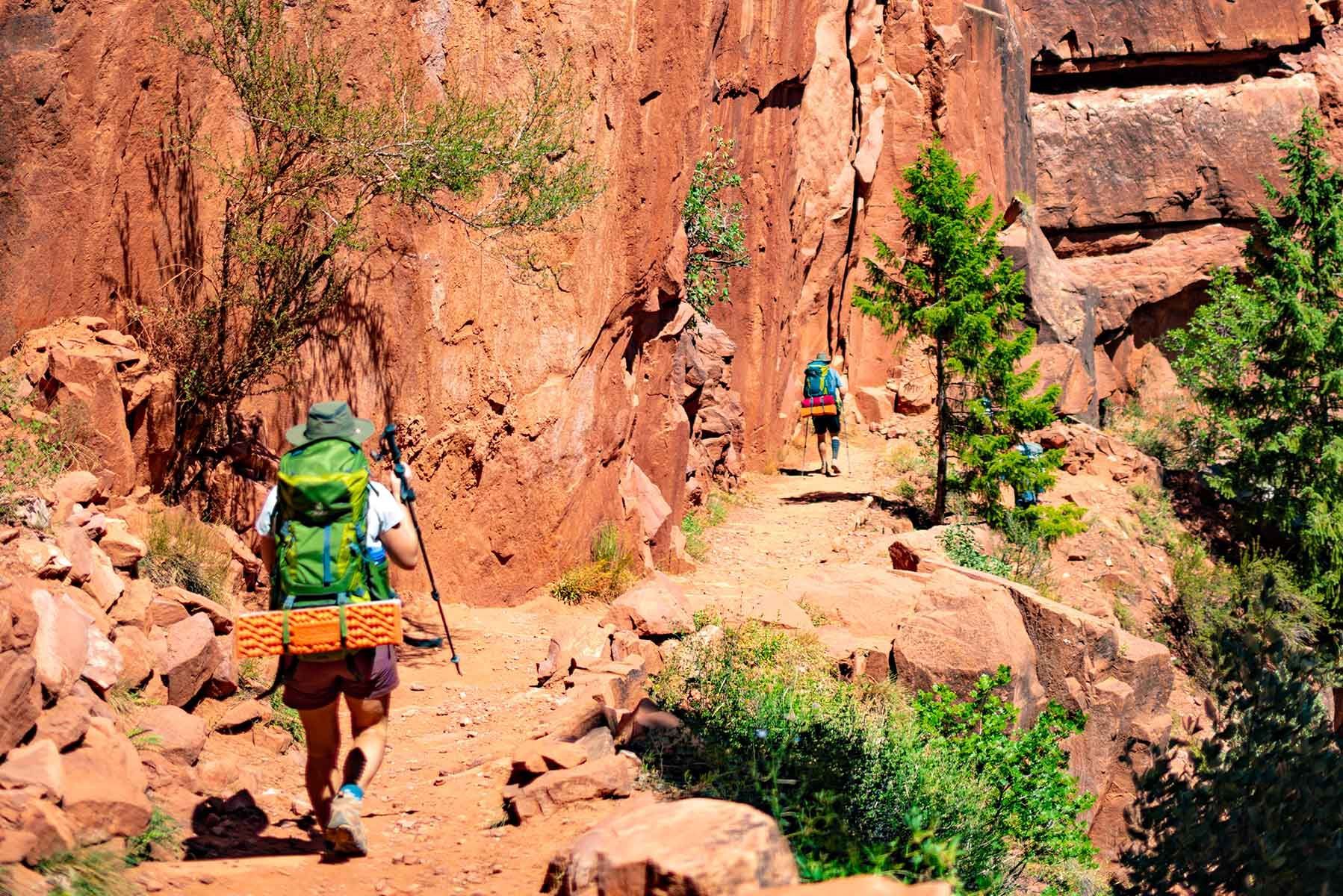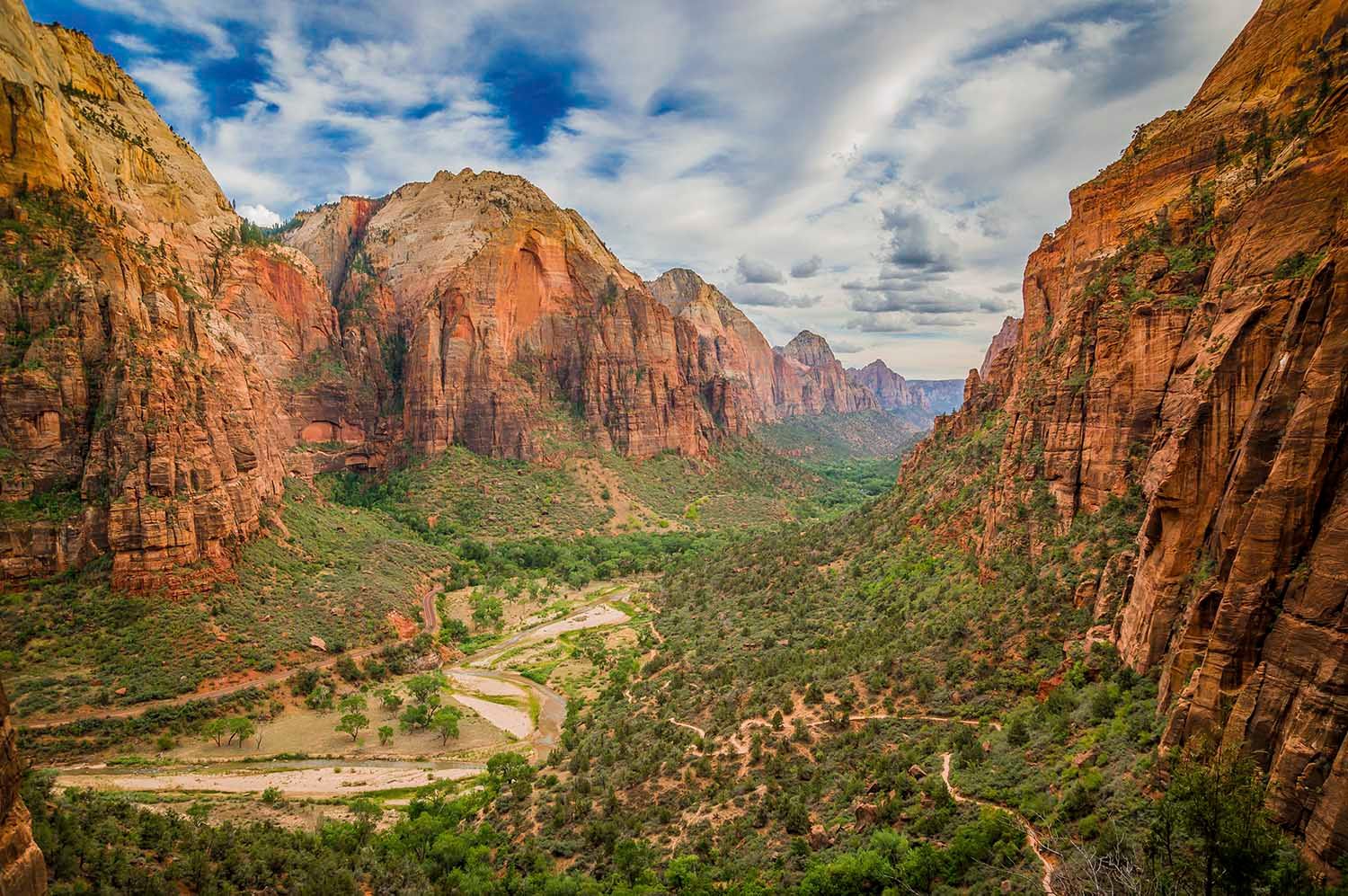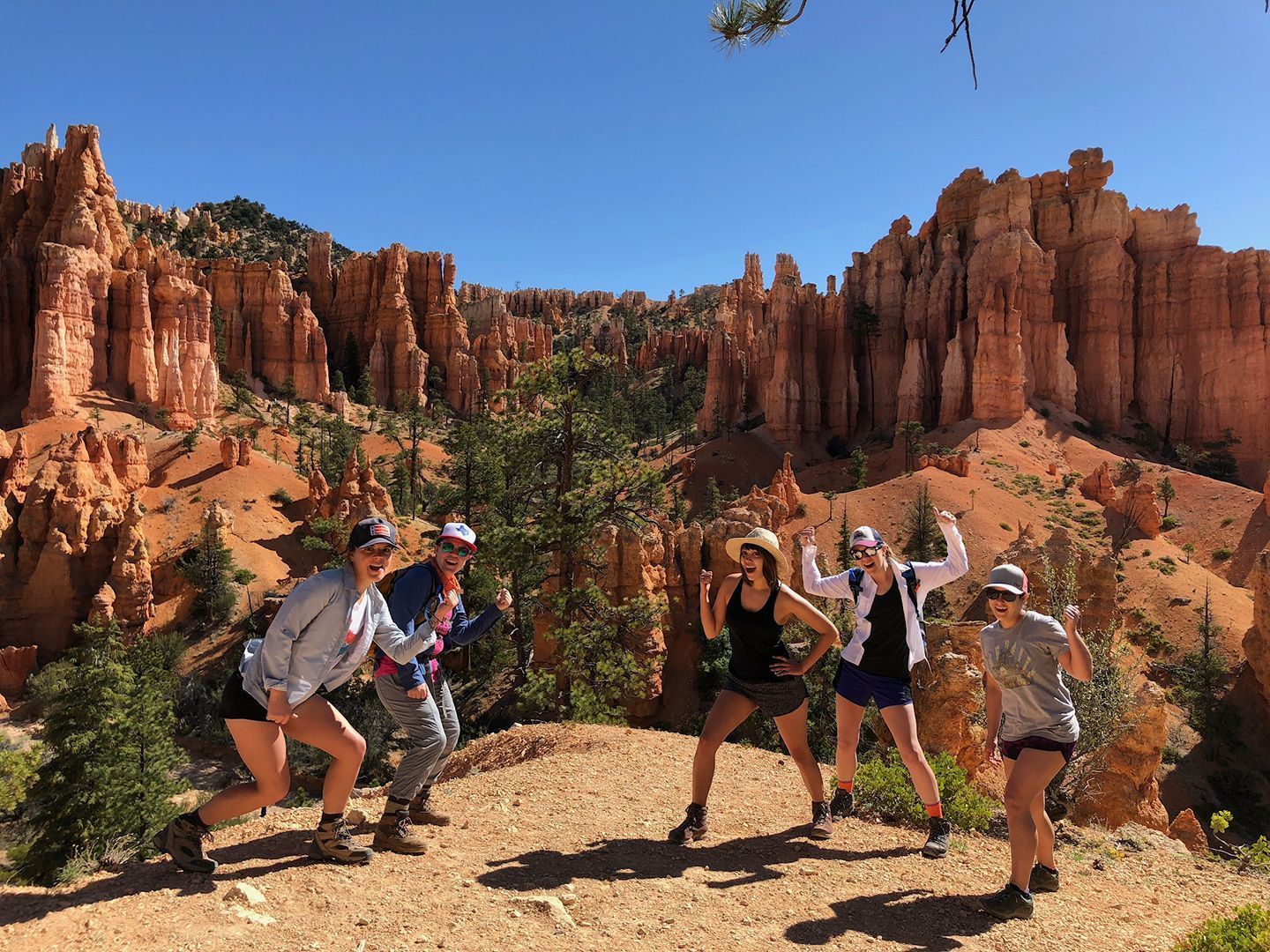Trips With Pack Animal Support
Key Takeaways
- Mule-supported Grand Canyon trips let hikers explore deeper with just a lightweight daypack, combining comfort and adventure while preserving a century-old canyon tradition.
- Pack animals like mules remain essential for carrying gear, supplies, and mail to remote canyon areas—offering both practicality and a living link to Grand Canyon history.
- Mules are ideal trail companions thanks to their surefootedness, endurance, and calm nature, making them perfect for Grand Canyon mule rides and guided expeditions.
- Weather readiness is crucial — pack for seasonal changes, from hot summer sun to cool winter mornings, ensuring safety and comfort during your Grand Canyon adventure.
- Guided trips with Four Season Guides provide expert-led experiences, personalized itineraries, and pack animal support for a stress-free and unforgettable canyon journey.
John Hance liked to tell stories. Big stories. His favorite was that he dug the Grand Canyon himself and piled up the rocks and dirt out by Flagstaff. He was too modest to name the mountains after himself, so they call them the San Francisco Peaks today.
Hance came to the Grand Canyon to mine asbestos, but he quickly realized there were more dollars to dig out of the pockets of tourists than the billion-year-old walls of the canyon. Despite having one of the world’s great wonders to show off, the colourful raconteur was as big a draw as the mile-deep gorge in his time. After returning from Arizona, visitors would often gush as much about the guide as the canyon.
Late in 1886, Hance walked into the offices of the Flagstaff, Arizona, Champion and took out an ad offering accommodations in his hotel on the rim—the canyon’s first—and a journey down below from Grandview Point on the back of a mule. A unique Grand Canyon tradition was born.

The real facility of mules at the Grand Canyon
Mule trains do much more than ferry riders to the depths of the Grand Canyon. Even in this age of drones, almost everything that makes its way to the bottom of the canyon arrives on the back of an animal. That includes supplies and the U.S. Mail to Phantom Ranch. Trash is also hauled out by mules through the pack mule express system.
The result is that while only a handful of mule riders are permitted in the canyon each day, there are some 10,000 commercial trips per year from the South Rim and 8,000 from the North Rim. At Four Seasons, mules are used for support, hauling camping gear, food, and other essentials into the canyon. Trips with Pack Animal Support leave hikers with just a lightweight daypack to ease the journey and allow for more spirited explorations of the nooks and crannies of the Grand Canyon beneath the rim.
The mule train to the bottom of the Grand Canyon—a tradition not to be missed. If you're planning your adventure, a well-prepared packing list for the Grand Canyon is key to maximising comfort.
Understanding Pack Animals
What is a Pack Animal?
A pack animal is a domesticated creature used to carry loads, often in rugged terrain. Common examples include donkeys, mules, llamas, horses, and goats. Still wondering, what are pack animals or are horses pack animals? The answer: yes, horses are traditionally used alongside donkeys and mules.
These load carrying animals are often referred to as beasts of burden animals and have played a vital role throughout history. In the Grand Canyon, they remain critical today for hauling gear and supplies.
Pack Animal Culture
Did you know there’s a military field manual (FM 3-05.213) dedicated to the use of pack animals? It outlines pack loading, animal care, and terrain adaptability.
Crosswords often ask for clues like pack animal crossword clue or crossword beast of burden — now you know!
Why a mule?
A mule is a cross between a male donkey and a female horse. From this genetic stew the mule inherits from the donkey intelligence, endurance, great strength, and patience. From the horse comes nimbleness of foot and size. All of these traits make the mule the ideal trail companion for trips into the Grand Canyon.
For riders, riding mules means steady nerves and gentleness. Can you ride a mule? Absolutely, and they’ve been trusted for decades. Grand Canyon saddles are specially crafted on-site to better fit a mule’s flatter back and boast a high cantle at the back and a high swell under the saddle horn to better keep the rider from sliding backwards or forwards on the constantly sloping canyon trails. A horn gives an extra hold for skittish riders.
Mules in the Grand Canyon have been a fixture at the Grand Canyon for over 100 years. While the behavior of animals in a pack in a wilderness environment can never be completely predictable, the safety record of mules in the hands of trained skinners in the canyon is exemplary. Mules always have the right of way on the trail – walking or resting.
Experience Classic Rides
Grand Canyon Mule Rides
You’ve probably heard of mule rides in the Grand Canyon, but have you considered booking grand canyon mule ride reservations? These include options like:
- Mule rides down the Grand Canyon
- Mule trip Grand Canyon South Rim
- Mule tour Grand Canyon
Our Grand Canyon mule tours offer unforgettable moments.
Pro tip: Mule ride Grand Canyon cost varies by season and trip duration. Ask us for details!
You may also experience the stunning contrasts of the Grand Canyon with Four Season Guides on an exclusive lodge-based hiking tour!
VISITOR Resources and Weather Insights
What to Bring
Before hitting the trails, visitor should always prepare the best time to visit the Grand Canyon and a packing list to include essentials like water, sunscreen, layers, and first aid. If you're wondering what to pack for Grand Canyon adventures in cooler months, gear like gloves, insulated jackets, and traction devices are crucial.
Fall & Winter Weather
Travelling in the Grand Canyon in November offers crisp air, fewer crowds, and magical views. Expect chilly mornings and mild afternoons — the temp in Grand Canyon in November can range from the low 30s to the high 50s. If you’re planning your trip in February, expect cooler mornings and potentially icy trails, depending on elevation.
Curious about what to wear to the Grand Canyon during seasonal transitions? Dress in moisture-wicking layers and bring a shell for sudden shifts. Don’t forget: what to wear in Arizona in February includes long sleeves and a jacket.
Spring Conditions
Planning for March in Grand Canyon? Spring brings thawing snow and blooming flora, so check what is the weather like in March before finalizing plans. This season is perfect for moderate hikes and fewer crowds.
April is even better — visiting Arizona in April brings ideal conditions for long hikes and photography.
Summer Temperatures
If you're planning a summer visit, note that Arizona weather in June 2024 will be hot and dry, especially midday. Hydration and sun protection are critical.
Heading into July? The average temp in grand canyon in July can soar above 85°F during the day. Still, many adventurers enjoy visiting Grand Canyon in July for sunrise hikes and starry skies.
Holiday Season Hiking
Winter hikes are equally magical. There are beautiful places to see in Arizona in December, with some trails offering snow-dusted views. If you're up for it, hiking in December is possible with warm gear, especially for those visiting Arizona in December seeking tranquility and scenic beauty.
Frequently Asked Questions
Explore what makes mule-supported trips in the Grand Canyon a unique and time-honored way to experience its beauty, history, and adventure.
What is a pack animal?
A pack animal is a domesticated creature trained to carry loads, especially in rugged terrain. Common examples include mules, donkeys, horses, llamas, and goats. They transport gear, supplies, and mail in remote areas like the Grand Canyon, making deep-canyon travel possible for both hikers and tour operators.
Why are mules used in the Grand Canyon?
Mules are a cross between a donkey and a horse, combining strength, endurance, intelligence, and sure-footedness. These traits make them ideal for navigating steep, uneven canyon trails. Their calm temperament and excellent balance ensure safe transport for both riders and cargo in challenging conditions.
Can you ride mules in the Grand Canyon?
Yes. Guided mule rides are a long-standing tradition in the Grand Canyon. Professional wranglers lead small groups down trails like Bright Angel or South Kaibab. Riders benefit from specially designed saddles that enhance comfort and safety while providing an unforgettable perspective of the canyon’s depth and grandeur.
How do pack mules support hikers?
Pack mules carry camping gear, food, and supplies, allowing hikers to travel light with only a daypack. This support enables longer, more comfortable hikes and lets visitors explore the canyon’s remote trails without the burden of heavy loads. It’s an efficient and time-tested system still vital today.
What do mules carry to Phantom Ranch?
Mules regularly deliver mail, fresh food, and essential supplies to Phantom Ranch, located at the canyon’s bottom. They also haul out trash and recyclables. Despite modern technology, the steep terrain means pack mules remain the most reliable and environmentally friendly transport option.
How safe are mule rides in the Grand Canyon?
Mule rides have an excellent safety record. Each animal is trained and handled by experienced wranglers who know the trails intimately. Riders receive safety briefings before departure, and mules always have the right of way. While no wilderness activity is risk-free, these guided rides are known for their reliability and care.
What should I pack for a Grand Canyon mule-supported trip?
Pack light but smart: water, sun protection, layered clothing, sturdy shoes, and first aid essentials. Seasonal adjustments matter — add gloves and warm layers in winter, and cooling gear in summer. Most of your heavy items, such as food and tents, will be carried by the mules.
When is the best time to take a mule-supported trip?
Spring and fall are ideal for mule-assisted adventures due to mild temperatures and fewer crowds. Summer brings heat and potential storms, while winter offers solitude but colder, icy conditions. Check seasonal weather forecasts before booking to ensure comfortable and safe trail conditions.
How far do mules travel in a day?
On average, Grand Canyon mules can cover 8–10 miles per day, depending on trail steepness and load weight. Their stamina and careful pacing allow for steady progress without overexertion, ensuring both animals and riders reach their destinations safely and comfortably.
What’s the difference between mule rides and pack mule support trips?
Mule rides are primarily for sightseeing — visitors ride the mules themselves. Pack mule support trips, on the other hand, are hiking-focused adventures where mules carry supplies for the group. This allows hikers to explore more terrain with lighter packs and greater freedom.
Can I bring my own gear on a pack-supported hike?
Yes, you can bring personal gear, but it’s typically limited to a set weight to protect the mules. Outfitters like Four Season Guides will provide packing guidelines to ensure safe, balanced loads and smooth transport down the trails.
Ready to explore deeper?
Whether you're riding into history on a mule or exploring the canyon trails on foot, the Grand Canyon promises an experience unlike any other. With the right gear, preparation, and support, your journey can be both safe and spectacular.
At Four Season Guides, you can choose from expertly guided tours led by seasoned professionals — perfect for those who want structure, support, and deep local knowledge. Prefer something more personal? We also offer customized adventures, tailored to your interests, fitness level, and travel dates.
Curious why outdoor lovers keep coming back to FS Guides? Check out our Google Business Profile Reviews and discover what guests are saying about their unforgettable hiking and backpacking experiences.
Four Season Guides, 506 N Grant St suite o, Flagstaff, AZ 86004, United States
+19285251552
35.19653980, -111.62000560

